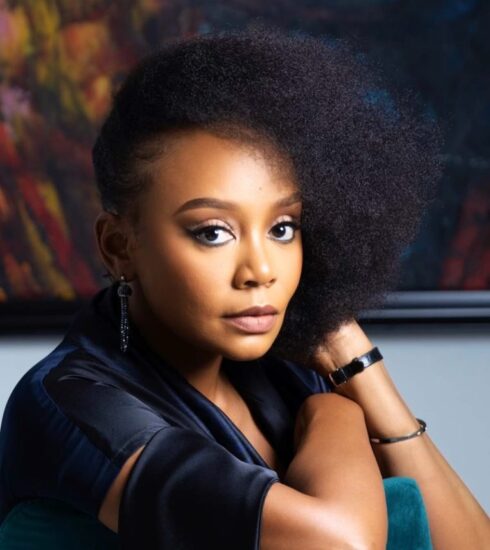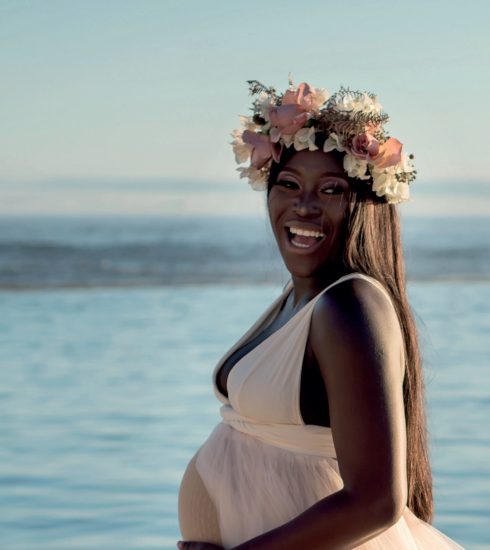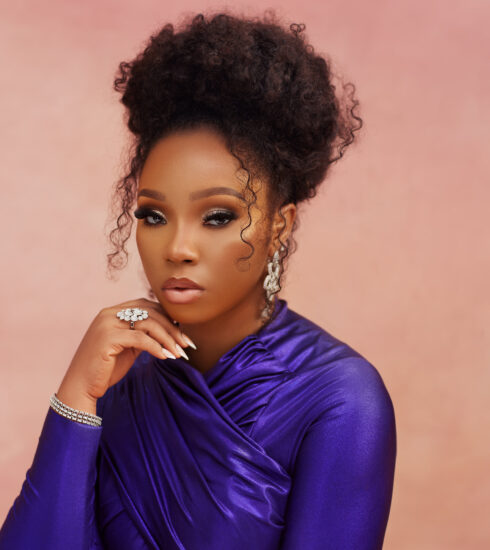The Future of Fashion: How AI is Revolutionising The Fashion Industry in 2025
Fashion is a multi-billion dollar business; more people work in the buying, selling, and production of clothing than in any other industry in the world. Millions of workers design, sew, glue, dye, and transport clothing to stores every day. Advertisements on buses, billboards, and magazines give us ideas about what to wear subconsciously or consciously, and even people who claim they don’t care what they wear choose clothes every morning that say a lot about them and how they feel that day.
One characteristic that sets the fashion industry apart from other manufacturing sectors is that the same goal primarily drives it as its final product: change.
The roles of the people who make up the fashion industry: designers, retailers, factory workers, tailors, technically skilled embroiderers, the press, publicists, salespeople, fit models, runway models, couture models, textile manufacturers, pattern makers, and sketch artists, largely determine what the industry is all about. The fashion sector may be summed up as clothing production, but it would fail to recognise the crucial difference between clothing and fashion. Even though apparel serves a functional purpose and is one of humanity’s fundamental needs, fashion adds its prejudices to personal preference, style, and cultural development, which is why fashion is often seen as a reflection of society’s shifting values, identities, and artistic expressions.
On the other hand, The term artificial intelligence (AI) describes the replication of human intelligence in computers programmed to think, learn, and make decisions. These machines carry out problem-solving, pattern recognition, language comprehension, and even creative endeavours like designing that normally demand human intelligence.
AI is now a crucial component of the fashion industry’s progress, transforming everything from design to the consumer experience. To help firms remain ahead of the rapidly evolving fashion industry, AI examines data from social media, fashion shows, and customer behaviour to forecast future trends. E-commerce systems utilise AI to make product recommendations based on user preferences, browsing history, and previous purchases, resulting in a customised shopping experience. Customers can preview how clothing will fit them virtually without physically trying it on, thanks to AI-powered virtual fitting rooms, which improve the convenience of online purchasing by providing tailored outfit recommendations based on individual tastes, body types, and even weather conditions. AI plays a big part in fashion styling. AI-powered digital stylists can curate complete outfits, increasing accessibility and personalising fashion to suit individual preferences. AI helps designers by automatically generating patterns, suggesting colour schemes, and even creating entire designs based on customer data and current trends. All things considered, AI is more than simply a new technology; it is a revolutionary instrument that improves productivity, innovation, and consumer interaction, influencing the fashion industry and beyond.
We will explore ways AI will revolutionise the styling and fashion industry in 2025.

(1) PERSONALISED STYLING LIKE NEVER BEFORE
AI has made customised style possible to a degree that has never been possible. The affluent and celebrities were the only ones who could afford to hire a personal stylist in the past. AI-powered platforms and apps have democratised this service in the modern day by serving as virtual stylists that can be tailored to each client’s demands. These tools create customised outfit recommendations by examining a user’s browser history, body measurements, previous purchases, and even social media activity. Advanced algorithms take into account variables like skin tone, body shape, and lifestyle choices to suggest looks that boost a user’s confidence and appearance. AI can recommend whole ensembles based on your preferences, whether you’re looking for a weekend getaway casual ensemble or a formal event dress. This makes fashion accessible and pleasurable for everyone.

(2) VIRTUAL FITTING ROOMS FOR A BETTER EXPERIENCE
The anxiety associated with online purchasing and the annoyance of long lineups at fitting rooms is gradually disappearing thanks to AI-powered virtual fitting rooms. Thanks to these cutting-edge tools, customers may use their laptops or smartphones to try on clothing virtually. AI generates a lifelike virtual representation of the user’s physique by using a phone camera or uploading measurements, showing how various clothing would fit. Both customers and retailers save time and money thanks to this technology, which also greatly lowers the percentage of returns while improving the online shopping experience. Brands like Zara, ASOS, and H&M are already using this technology to enhance consumer satisfaction by providing a smooth and easy shopping experience.

(3) SMARTER TREND FORECASTING
It has always been difficult for designers and brands to stay ahead of fashion trends, but artificial intelligence is changing this. Artificial intelligence can accurately forecast new trends by analysing enormous amounts of data from blogs, fashion shows, social media platforms, and street fashion. Using these data, designers may lower the risk of making unsaleable products and produce collections that appeal to today’s consumer preferences. Furthermore, brands can quickly adjust to shifting market demands by using AI’s predictive abilities to predict changes in consumer behaviour. While manufacturers can keep a competitive advantage in the quick-paced fashion sector, customers will always have access to trends they adore, thanks to this data-driven strategy.

(4) SUSTAINABLE FASHION THROUGH AI
The fashion industry has prioritised sustainability, and artificial intelligence is helping advance environmentally friendly methods. AI helps fashion brands save waste and enable more accurate inventory management by precisely forecasting which products will be popular. This lessens overproduction, which is a major cause of environmental deterioration. AI also streamlines supply chains by guaranteeing that resources are sourced and used effectively, reducing carbon emissions. Some businesses are pushing the limits of environmentally responsible fashion by using AI to create eco-friendly designs and sustainable textiles. Brands that put sustainability first are attracting more and more customers, and artificial intelligence is assisting these companies in satisfying the rising demand for morally and environmentally conscious clothing.

(5) ENHANCED CUSTOMER SERVICE WITH AI CHATBOTS
AI-powered chatbots are transforming the fashion industry’s customer service. From product recommendations to styling guidance, these clever virtual assistants are on hand around the clock to help clients with various questions. In contrast to human customer support agents, AI chatbots can manage several queries at once, offering prompt answers and tailored support. In addition to making purchasing more enjoyable, this also lessens the workload for customer support representatives. AI chatbots are being included in the websites and social media accounts of numerous fashion stores to guarantee that clients receive timely and effective assistance throughout their buying experience.

(6) AI IN FASHION DESIGN AND CREATIVITY
Beyond data analysis and customer support, artificial intelligence is also changing the fashion design industry’s creative process. Designers are increasingly using AI tools to produce innovative patterns, recommend colour schemes, and even produce whole collections. To generate original and creative designs, these tools examine past fashion data, customer preferences, and current trends. Many designers see AI as a useful tool that expands their creative potential, even though some people are concerned that it would limit their creativity. AI speeds up the creative process, giving designers more time to try out novel concepts and push the limits of fashion innovation.

(7) AI-DRIVEN VIRTUAL FASHION SHOWS AND RUNWAYS
Virtual fashion shows powered by artificial intelligence are revolutionising the traditional fashion show, complete with glitzy runways and VIP audiences. With the advent of 3D models and internet runways, designers can now present their collections to a worldwide audience. Artificial intelligence technology allows the creation of realistic and captivating virtual fashion shows, eliminating the need for travel and physical venues. In addition to saving money, this also encourages sustainability by reducing the negative environmental effects of conventional fashion presentations. Without the limitations of physical locations, virtual fashion events allow smaller firms to reach new consumers and obtain global exposure.

(8) AI IN CUSTOMISATION AND MADE-TO-ORDER FASHION
AI is revolutionising customisation and made-to-order fashion, which enables fashion brands to provide individualised apparel based on consumer preferences. AI helps develop unique products that fit and represent individual interests by evaluating client data, such as body measurements, stylistic preferences, and shopping activity. This method minimises waste from overstock and bulk production because products are only made upon request. Customisation fits the growing desire for ethical and sustainable fashion methods while improving the client experience. Customers can use bespoke designs to showcase their unique style while supporting eco-friendly fashion.

(9) AI AND INFLUENCER MARKETING IN FASHION
In the fashion sector, influencer marketing has become a potent tool, and artificial intelligence is making it even more effective. AI algorithms examine interaction data, audience demographics, and content performance to find the best influencers for a brand’s target market. Marketing initiatives are guaranteed to target the proper audience and produce the best results thanks to this data-driven approach. Additionally, AI can forecast the kinds of content audiences will find engaging, assisting marketers in forming powerful influencer alliances. Fashion brands can maximise their return on investment and forge closer ties with customers by using AI to inform their marketing strategy decisions.

(10) AI IN FABRIC INNOVATION AND SMART TEXTILES
AI is propelling the creation of smart textiles and advances in fabric innovation. Through analysing material qualities and performance, AI assists researchers in developing more ecologically friendly, comfortable, and long-lasting textiles. Examples of these innovations are temperature-regulating materials, self-cleaning textiles, and textiles incorporating wearable technology like fitness trackers and health monitors. These smart textiles give customers fresh and intriguing solutions that go beyond conventional apparel by fusing fashion and utility. AI’s contribution to fabric innovation is expanding the realm of what is conceivable in the fashion sector by incorporating cutting-edge technology with fashion.

CONCLUSION
In 2025, AI will be more than just a catchphrase in the fashion sector; it’s a potent instrument that’s changing the way we shop, dress, and think about style. Thanks to AI, fashion is becoming more inventive, efficient, and accessible, from virtual fitting rooms and individualised styling to sustainable practices and creative design. As technology advances, the fashion industry will continue to discover new methods to use AI, making fashion smarter and more exciting for all.
COVER AND COVER STORY IMAGES FROM GOOGLE

Dorcas Akintoye is a versatile writer with a passion for beauty, fashion, relationships, and culinary delight. With a keen eye for detail and a passion for storytelling, she adds a touch of elegance to every topic she explores. She is a writer at THEWILL DOWNTOWN.






